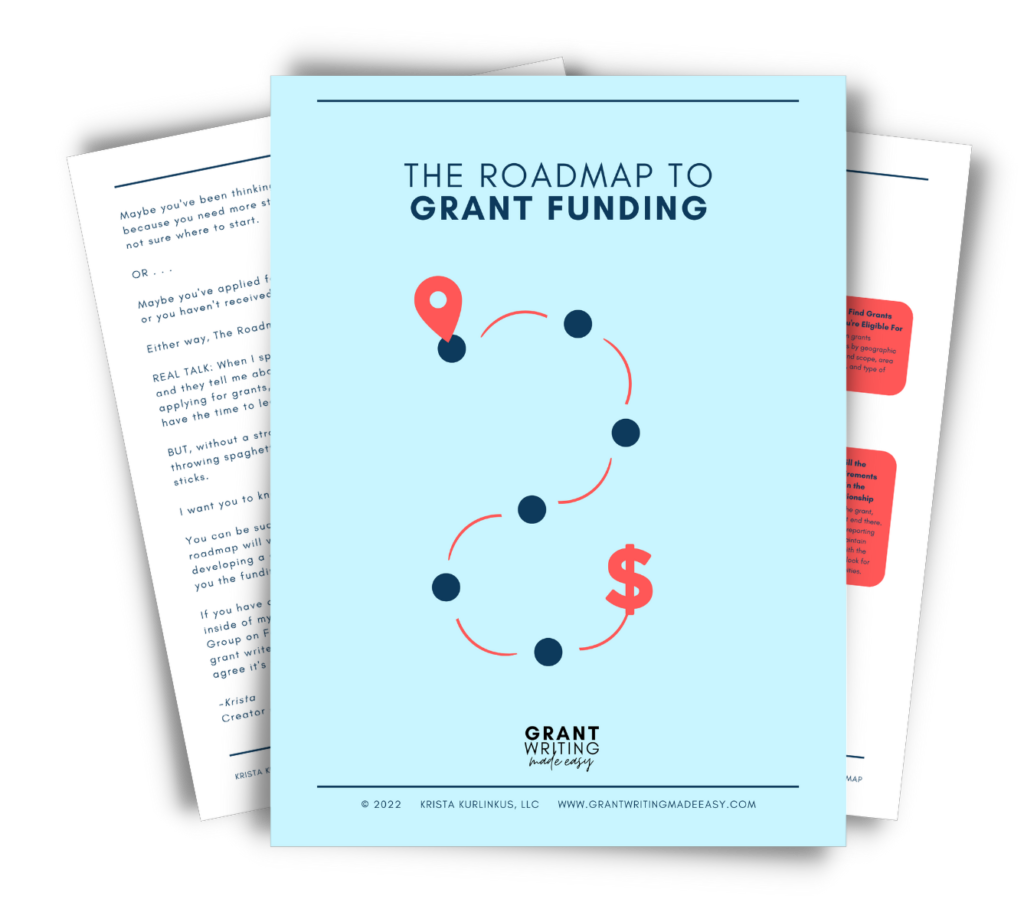When I talk with nonprofit leaders about their challenges with grants, one of the most common ones I hear is that they don’t have the time or the resources to prioritize grantseeking. According to GrantStation’s most recent State of Grantseeking report, lack of time/staff is the most common barrier to grantseeking. Especially for small nonprofits this is a major challenge.
Then when we dig a little, it quickly becomes apparent that another factor is that they’re not sure spending time and effort and resources on writing grants will pay off.
In other words, they don’t believe there will be a high enough Return On Investment (of time, effort, and resources) to justify writing grants or learning to write grants well.
So today, I want to run through a little math with y’all to show you why spending time on grantseeking is one of the smartest decisions you can make for your nonprofit.

Let’s talk about the investment
When you’re first starting out writing grants, the investment of time that doing one well requires can be big.
Of course, as you become more skilled and comfortable with grant writing and you have materials on hand, you can put together grant applications much more quickly.
I always advise leaders of small nonprofits that they should spend about 50% of their time on grantseeking and fundraising. The objection always comes up that they need to be spending that time on their programs–they just can’t dedicate that much time to grant writing.
I understand where they’re coming from, but the reality is that stable funding is key to the longevity, stability, and success of your programs.
If you run a food bank, having grant funding is the difference between feeding people this week and being able to feed people all of next year.
If you run a job readiness program, having grant funding is the difference between helping someone with their resume and being there for them with interview coaching, support for their interview attire, and salary negotiation skills.
The bottom line is that stable funding is the only way you can guarantee that you’ll be there for your participants for the long haul, which is what you want and what they deserve.
So yes, making grants a priority is a time commitment.
It may also require an investment in your professional development. If you’ve never written a grant before, or if you’ve had limited success with small opportunities, then before you can bring in consistent revenue with grants you’ll need to learn some strategies.
This comes back to the question of time. I don’t want you or any other nonprofit leader to waste valuable time applying for grants that you don’t have a good chance of being awarded.
So you need to know how to find those grants that you have a great shot at!
You can also learn how to write grants by first writing a standard grant narrative. And guess what? Taking this step is also going to save you time in the long run.
Let’s talk about the return
Every year, GrantStation releases a report called “The State of Grantseeking.” This is a great resource for anyone interested in learning about trends in grantmaking.
According to the 2022 report (which breaks down the trends from 2021), the chances of being awarded a grant increase with the number of grants submitted. The report states,
“Twenty-five percent of organizations that submitted one application won no awards. However the percentage of organizations that won at least one award was high among organizations that submitted three to five applications (91%), six to ten applications (96%), or eleven or more applications (98-100%).”
We can see that the return increased with the investment (of time, energy, and resources to submit grants).
Grant award amounts vary widely, from micro-grants of less than $1,000 to huge grants in the millions of dollars.
Award amount is another important factor when you think about the return on your investment.
According to the 2022 State of Grantseeking report, “the median largest individual award was $82,000.” They break this down into non-government funders and government funders: “The median largest award from non-government funders…was $37,000,” while, “The median largest award from government funders…was $259,000.”
I like these reports as a starting point for understanding trends in grantseeking, but I also love to hear from my Grant Writing Made Easy students about the returns on their grantseeking efforts. One of my favorite testimonials to share is from Mary. She’s the Executive Director of Unique Fabrics, and she said, “I have received over $490,000 in grants, and I contribute that to Krista’s instruction. Before taking Grant Writing Made Easy, I had only won a $2,500 community grant.”
Your next steps
Are you ready to prioritize grantseeking in your nonprofit?
If you’re feeling a little overwhelmed, I want you to know that you’re not alone!
In fact, I have something to help you get started: The Roadmap to Grant Funding.







